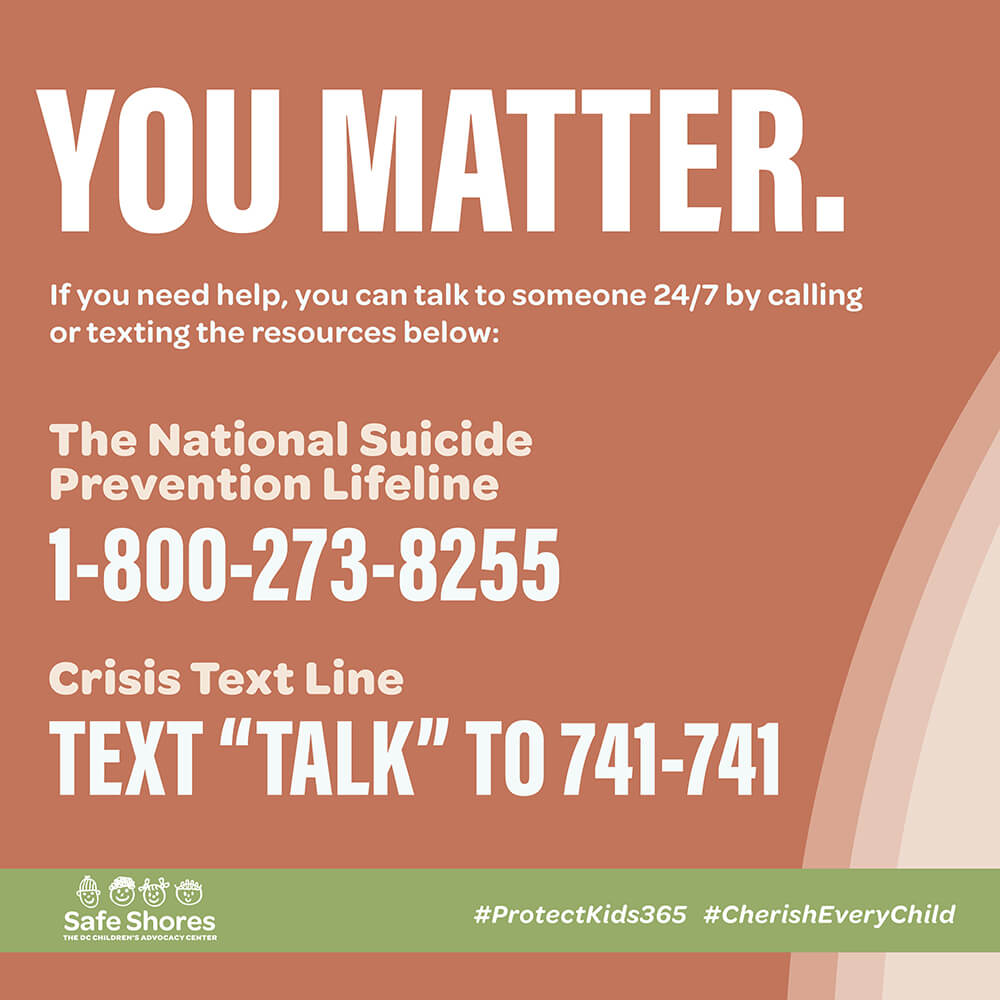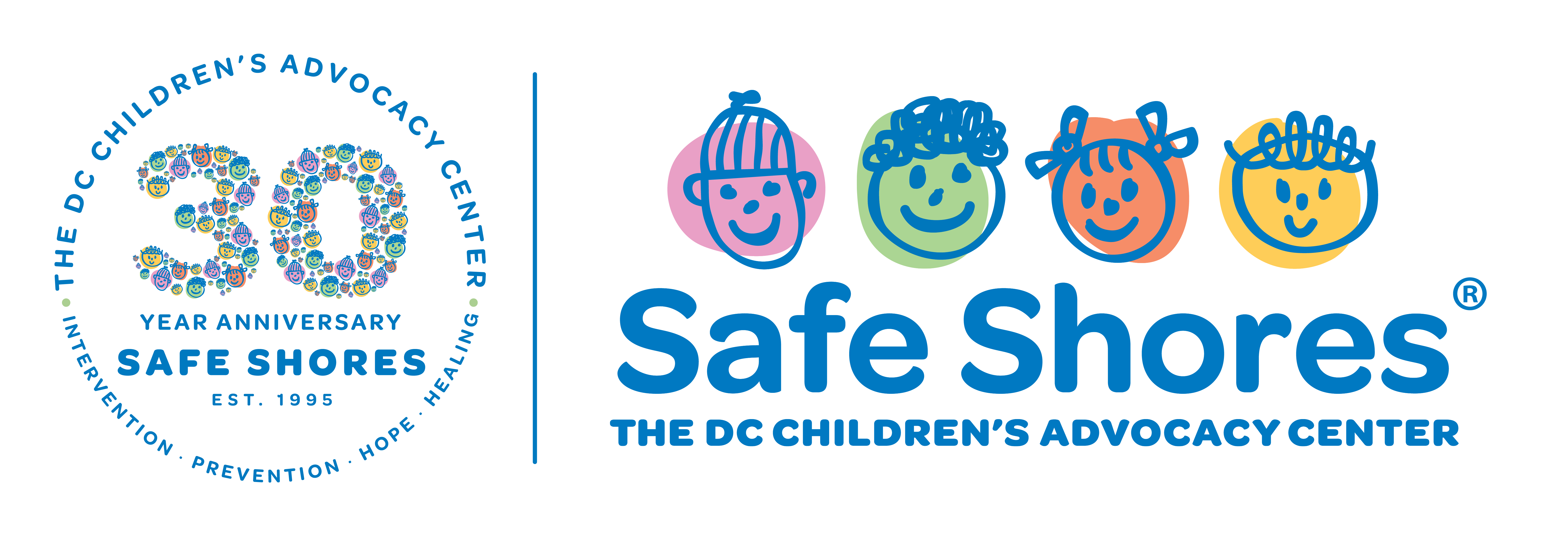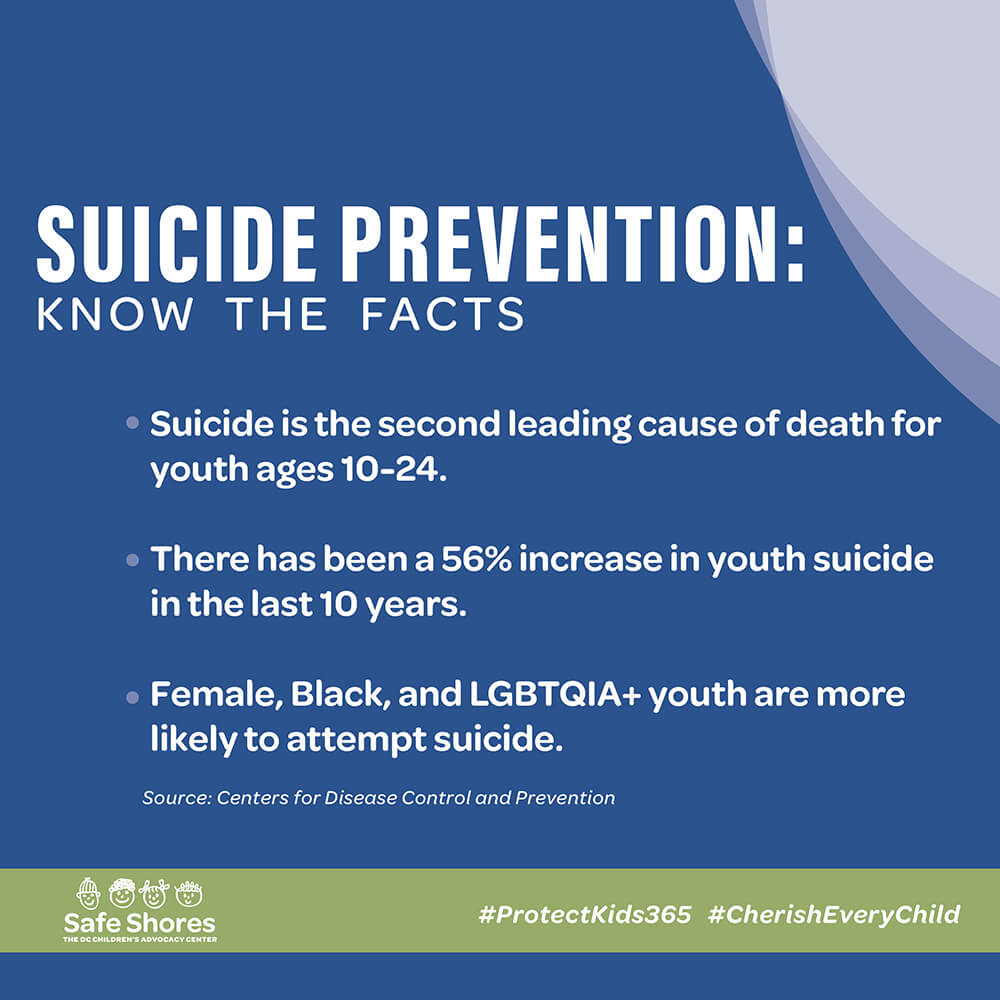
Suicide Prevention: Know the Facts
Let this sink in: Suicide is the second leading cause of death for young people ages 10-24. Youth suicide has climbed by 56% in the last 10 years and only continues to rise, according to CDC data released just last month. Most importantly, though: youth suicide is preventable.
While September is National Suicide Prevention Awareness Month, every month, week and day should be used to recognize the struggles our youth are facing, particularly during the pandemic.
Preventing suicide means knowing the signs and learning how to help. Use the information in the graphic below:
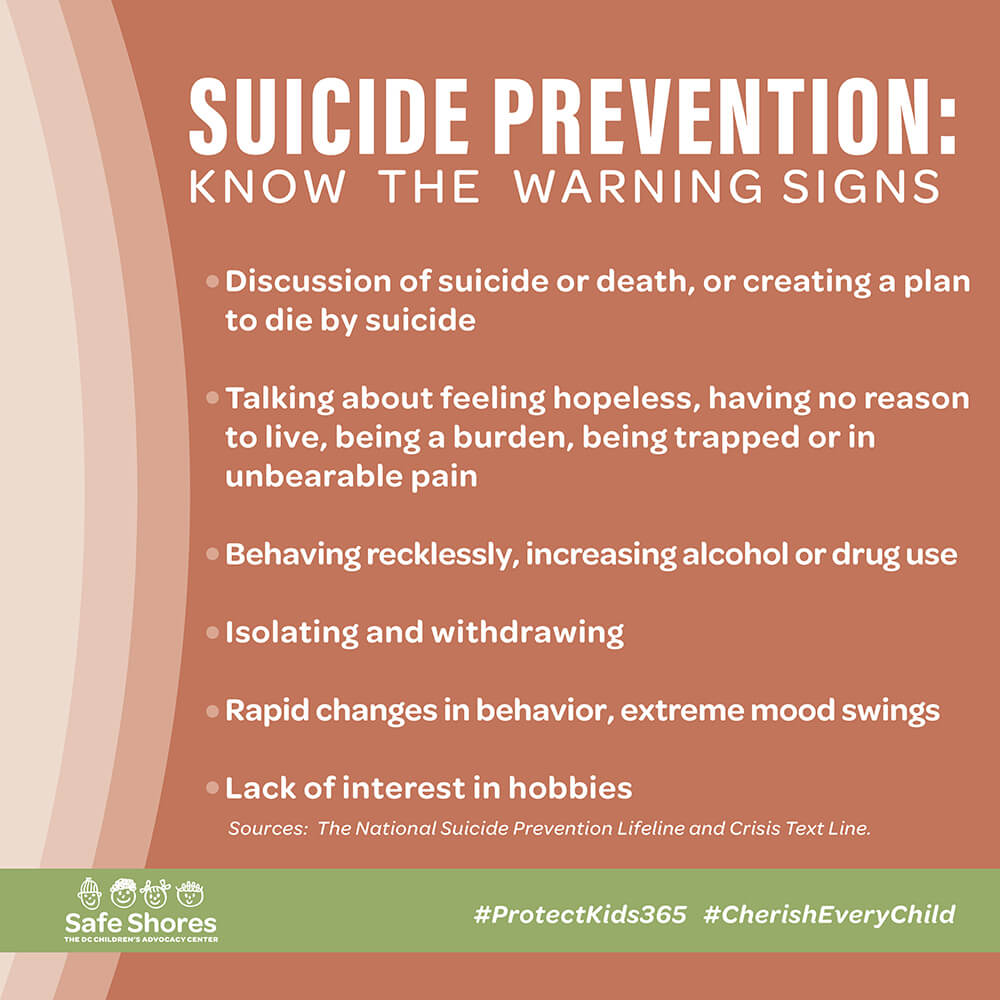
Suicide Prevention: Know the Warning Signs
- Discussion of suicide or death, or creating a plan to die by suicide
- Talking about feeling hopeless, having no reason to live, being a burden, being trapped or in unbearable pain
- Behaving recklessly, increasing alcohol or drug use
- Isolating and withdrawing
- Rapid changes of behavior, extreme mood swings
- Lack of interest in hobbies
Suicide warning signs are from The National Suicide Prevention Hotline and Crisis Text Line
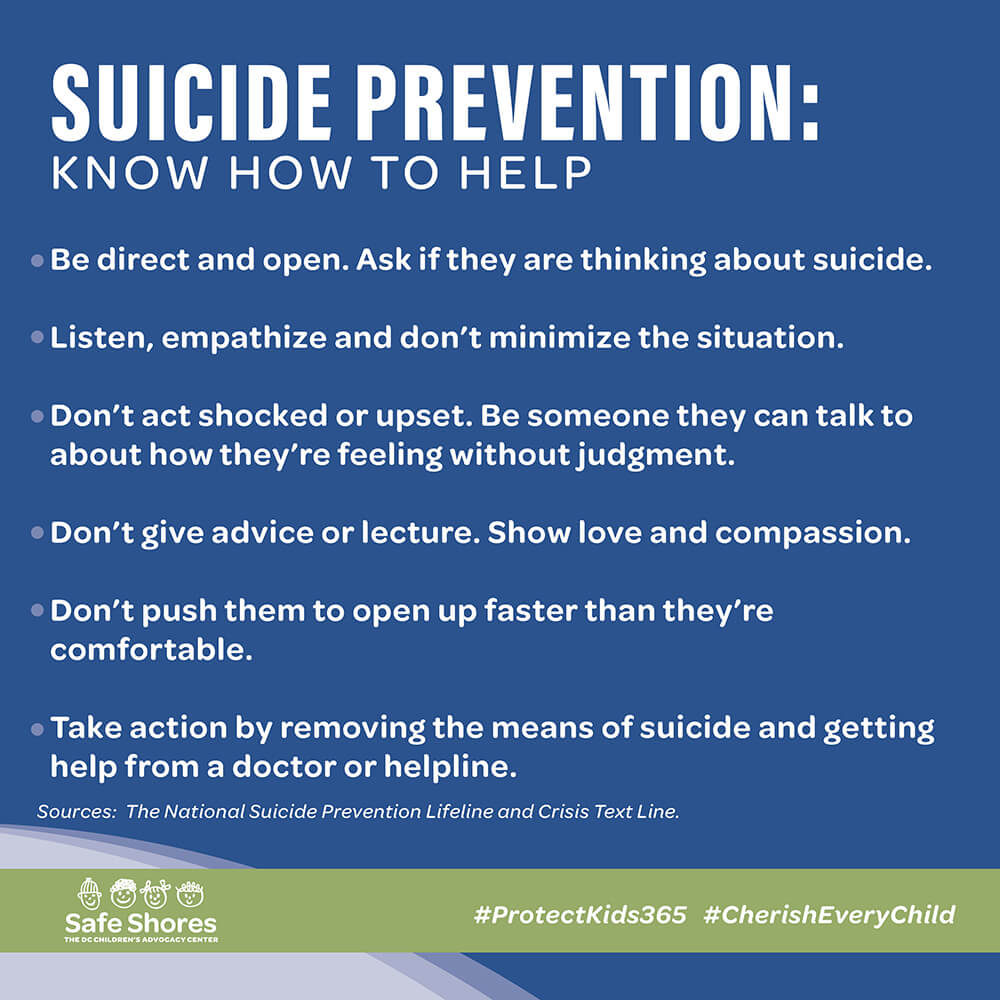
Suicide Prevention: Know How to Help
- Be direct and open. Ask if they are thinking about suicide.
- Listen, empathize and don’t minimize the situation.
- Don’t act shocked or upset. Be someone they can talk to about how they’re feeling without judgment.
- Don’t give advice or lecture. Show love and compassion.
- Don’t push them to open up faster than they’re comfortable.
- Take action by removing the means of suicide, and getting help from a doctor or helpline.
Suicide warning signs are from The National Suicide Prevention Hotline and Crisis Text Line
If you are struggling, reach out. Call the National Suicide Prevention Lifeline at 1-800-273-8255 or text “Talk” to Crisis Text Line at 741-741.
